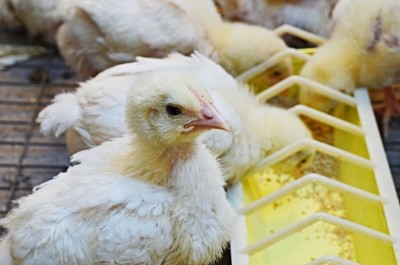Potent promise? How plant metabolites work in gut health and immunity is a 'rather new field'
At Kaesler Nutrition's recent forum held in Cuxhaven Germany earlier this month, a selection of academics presented current findings and research on gut health and immunity – for both humans and animals – and all turned focus to the power of secondary plant metabolites.
250,000 secondary plant metabolites identified, just 10% of world plants explored
Professor Dr Rudolf Bauer, head of the institute of pharmaceutical sciences at the University of Graz, said the antibacterial and anti-inflammatory properties of the 250,000 identified secondary plant metabolites are particularly relevant for animal health.
“I think the potential is really huge because we're talking now about functional metabolites,” Bauer told FeedNavigator.
“Many of these compounds are antibacterial, which means they first block the growth of bacteria, but they may also modulate the growth of bacteria in our gut when we are digesting these plants.”
While antibacterial was a well-explored concept, he said not as much is known about anti-inflammatory action, although it was another important function.
Secondary metabolites and specific gut bacteria – 'I think we know relatively little'
Though more knowledge is required on which secondary metabolites influence which gut bacteria. Moreover, little is known about the precise effect these metabolites have in the gut, according to the academics.
“I think we know relatively little,” said Professor Michael Blaut, head of gastrointestinal microbiology at the German Institute of Human Nutrition.

Further research is warranted to identify these large groups of chemical compounds, found naturally in plants, to grasp how they could be used advantageously in animals, as well as in humans, he said.
“Many of these plant metabolites influence the microbiota. If these bacteria happen to be beneficial, this, of course, has an advantage.”
Oral and nasal receptors
Dr Dietmar Krautwurst, head of chemoreceptor and biosignaling research at the Leibniz-Institute for Food Systems at the Technical University of Munich, talked about ongoing research into extra-nasal and extra-oral receptors.
Scientists have discovered that both humans and animals have oral and nasal receptors at more locations than previously thought.
In 2017, he said a US group of researchers found that a certain receptor seemed to be in charge of detecting short-chain fatty acids, something that “may modulate gut motility”.
“Now, the question: what was first - odorant receptors in the nose or odorant receptors in the gut? It's hard to answer this question at the moment because it's a rather new field of research,” he said.
Nevertheless, he said one thing was sure – that there would be “some surprises” in the near future as to where else these receptors might be found.

Dr Krautwurst and his team, for example, had already identified a sub-group of odorant receptors in white blood cells and the next step would be finding out what triggered these to respond.
“A big field of interest now is to find out whether it's actually these odorants which may enter our bloodstream or enter our gastrointestinal systems by eating food – are they actual agonists for these receptors? Or are the metabolites produced by our own system?”
“...It's a rather new field; it's just exploding. I think it will need some time to come up with explanations for certain mechanisms. But, I think in the next couple of years, we will learn more about how food ingredients are capable of modulating our immune system, modulating our gastrointestinal system and maybe other tissues in the body.”
















